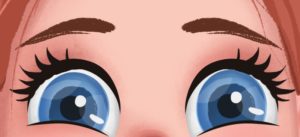Have you ever considered that humans’ eyes sit side by side a few inches apart, rather than one over the other a few inches apart? Whether you believe in a divine creator or evolution, the placement of our eyes facilitates depth perception. I realized this when a corneal abrasion required me to wear a patch over one of my eyes for a short time. Fortunately, mild abrasions to a cornea heal quickly. During this short time, however, I found myself concerned that I was having difficulty judging distances while driving. It was then that I realized that understanding how far apart something is requires the ability to see it from a slightly different angle.
The Back of the Card
There’s a scene from the movie My Cousin Vinny in which Vinny is explaining the difference between what the prosecutor tells the jury and what is actually real. Vinny uses a playing card to illustrate that the prosecutor will show the card and try to convince the jury that it is a brick. He tells his young cousin that by showing only the front side of a very thin card, and nothing else, the prosecutor limits the amount of information that the jury has on which to pass judgment. He will provide a very specific perception of what he calls the truth. Vinny then shows, by turning the card up, down, and side to side, that the “brick” that the prosecutor showed is not a brick at all. It’s his job, as a defender, to help the jury see the sides, the top, the bottom, and the back side of the “brick”.
With only one eye, see only one side of an object, like the card that the prosecutor holds up. Our perception is severely limited. Two eyes at slightly different horizontal positions allow us to see an object from two slightly different angles at once, giving us a much better perception. We can gain more information about the object. From seeing even a portion of a side of the object, we can see that it is not a flat object, but has depth. Taking a few steps to one side or the other gives us even more information about the sides of the object. Seeing it from above and below, and then from the back, we can discern pretty much everything about the outside of the object. But we cannot get that information from standing in one place and observing only one view of the object.
It should be pretty easy to see where I’m going with this.
Point of View Provides Depth
It is impossible to fully understand an issue if the only way you’ve examined it is from standing where you are right now. You must take at least a few steps to either side to understand that the issue has depth. But to fully understand it, you must see the front, both sides, the back, the top, and if possible, the bottom. And that takes effort.
It takes effort because we too easily dismiss some sources of information. We also default to believing that our social media news feeds are showing us things that will give us the full picture. Social media feeds can’t give you the full picture. Programmers designed the algorithms to keep you engaged by showing you things that are very similar to things you’ve interacted with before.
Consider the Source
If an unlikely news source suddenly shows up in your news feed, it’s probably providing a story that is more like what you usually “like” than what it usually shows. If you really want to know an issue, you’re going to have to actually walk around it, searching out people with viewpoints that are different from your own, and actually listening to them, and sincerely trying to understand why they feel the way they do.
What Do You Want From Your News?
There is danger in this. Most people are emotionally invested in believing that their playing card is a brick, and they really don’t want to find out that their emperor has no clothes. (Yes, I’ve mixed my metaphors. Sue me.) It can be satisfying to feel that the “other side” is wrong, but it’s a very shallow satisfaction.
Take off the eye patch, turn the card over, and walk around the object. The satisfaction in finding out you were wrong is much deeper.









